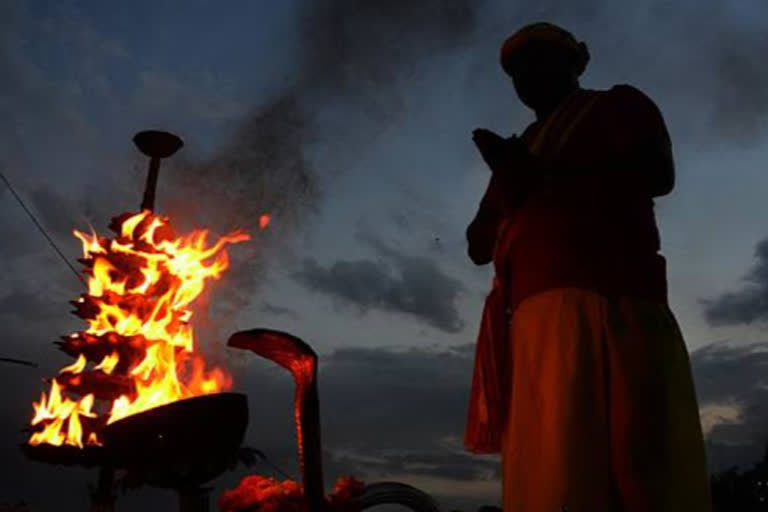Varanasi: In Sanatan Dharma, there is a special significance of fasting and worship. It is considered to be auspicious in Sanatan Dharma to do any work as per the suitability of the time, specified as per the positioning of the sun and the moon. A date has been set every month for the fast. At the same time, there is a month in every year, which is not considered to be auspicious for observing fast. This month is called Adhik Maas, Malamaas, and Purushottam Maas, which comes after every three years. This year, Purushottam Maas is starting from September 18, which will end on October 16. ETV Bharat had a special conversation with Dr Vinay Kumar Pandey, Head, Department of Astrology, Kashi Hindu University, on many issues including the importance of Malamaas in Sanatan Dharma.
- Adhik Maas has been created to equalize the calculation of solar year and lunar year.
- Purushottam Maas, which comes every three years, starts on September 18 this year.
- Adhik Maas is dedicated to Lord Vishnu, who is specially worshipped during this month.
- Religious work done during Adhik Maas is considered to be 10 times more fruitful than done during a normal month.
PURUSHOTTAM MAAS COMES ONCE IN EVERY 3 YEARS
According to Dr Pandey, our calculation of months is based on the position of the moon, which, according to the Indian tradition of calculation, is known by the names of Chaitra, Vaishakh, Jyeshtha, Ashadh, Sawan, and so on. Therefore, the month became lunar and the year became solar. There are 365 days in a solar year and 354 days in a lunar year. Every year, there are 11 days less in the lunar year as compared to the solar year. When the cycle of 11 days starts, it leads to a situation that cannot be aligned seasonally. In order to reconcile the gap, the sages imagined a greater month, which is also known as Adhik Maas so that there is harmony between the solar year and lunar year. It can also be called a scientific definition.
WHY IS IT CALLED PURUSHOTTAM MAAS
Dr Pandey said that between two Amavasya or the lunar phase of the new moon, there is the transmigration of the sun, which is counted as the lunar month. When there is the transmigration of Aries between two new moons, this particular month is called Chaitra. The subsequent transmigration of the sun ahead of the new moon is called Vaishakh. However, when there is no solstice between the two new moon days, this period is called Adhik Maas. It maintains the balance between the moon and the sun so that the arrangement of our festivals and other religious celebrations are organised in accordance with the seasons. After 32 months, Adhik Maas normally falls in the 33rd month. If averaged out, Adhik Maas is created after 32 months, 16 days, and 15 hours.
THERE IS A LEGEND BEHIND PURUSHOTTAM MAAS
Dr Pandey says that if one talks in terms of mythology, the origin of the Purushottam Maas or Adhik Maas cannot be traced as there is no evidence to suggest the existence of this particular, as the Adhik Maas is said to have originated from the feces of solar and lunar. Therefore, Purushottam Maas is also called Malamaas. In some places, this month is also called Vridhi Maas.
According to Dr Pandey, there is a mythological story attached to Purushottam Maas. This month originated to establish harmony among seasons but was discarded as the Malamaas is linked to the feces of solar and lunar. No religious functions are held this month. There were mentions of what to do and what not to do during all other months except Adhik Maas.
